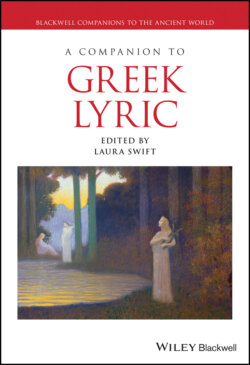Читать книгу A Companion to Greek Lyric - Группа авторов - Страница 73
Digital Resources
ОглавлениеPapyrology has long been in the vanguard of digital humanities: the Duke Databank of Documentary Papyri (= DDbDP) was established in 1982 (i.e., before the creation of the World Wide Web!); the Heidelberger Gesamtverzeichnis der griechischen Papyrusurkunden (= HGV) was launched in 1988, and in the mid-1990s, the Advanced Papyrological Information System (= APIS) was conceived and developed out of the Duke Papyrus Archive. Papyrologists now collectively curate papyri.info (http://papyri.info), which aggregates data and metadata from these and other resources. An equivalent portal for literary papyri (dubbed DCLP) was launched in December 2017 and has since been incorporated into papyri.info. But there are other important digital corpora of data and metadata about literary texts, which warrant mention in this chapter inasmuch as papyri can also be identified according to their unique systems of enumeration:
M.-P.3: Catalogue des papyrus littéraires grecs et latins3 (http://cipl93.philo.ulg.ac.be/Cedopal/MP3/dbsearch_en.aspx). This catalog is the online third edition of the Greek and Latin Literary Texts from Greco-Roman Egypt, edited by Pack and Mertens. Literary papyri are frequently identified by their Mertens-Pack (or M.-P.3) number.
TM: Trismegistos (http://www.trismegistos.org) aims to catalog metadata about all ancient texts on papyrus (and other media)—big data for the papyrological world. It assigns a unique, stable identifier to every record in the database (823,217 texts as of April 2020).
LDAB: Leuven Database of Ancient Books, now part of the Trismegistos catalog (http://www.trismegistos.org/ldab). This database collects basic information on literary texts from antiquity (16,561 items as of April 2020).
The various systems of enumeration both digital and archival can be used in tandem: for the purpose of illustrating the overlap, consider the cases of a codex from Berlin containing Sappho and the famous Lille Stesichorus.
| Berlin Sappho | Lille Stesichorus | |
| Inventory Number | P.Berol. inv. 9722 | P.Lille inv. 111c + 73 + 76a–c |
| editio princeps | BKT 5.2, no. XIII 2 (pp. 10–18) | • CRIPEL 4 (1976): 287–303 • cf. ZPE 26 (1977): 1–6 • cf. ZPE 26 (1977): 7–36 |
| Other Critical Editions | • Frr. 92–97 V.• Frr. 92–97 LP | • PMGF 222b • Fr. 97 F |
| TM | 62713 | 62787 |
| M.-P.3 | 1451 | 1486.1 |
| LDAB | 3901 | 3975 |
In the former case, six fragmentary poems of Sappho from a single codex have as many possible identifying numbers (LDAB 3901 = M.-P.3 1451 = TM 62713, etc.); so too in the latter case, where several separately inventoried fragments from a single poem are reunited under an individual number (PMGF 222b = fr. 97 F = LDAB 3975 = M.-P.3 1486.1, etc.). Encountering a TM or M.-P.3 number in the course of one’s research should not startle; knowing the different names for something is akin to mastering it—πολυωνυμία is not only a property of gods!
